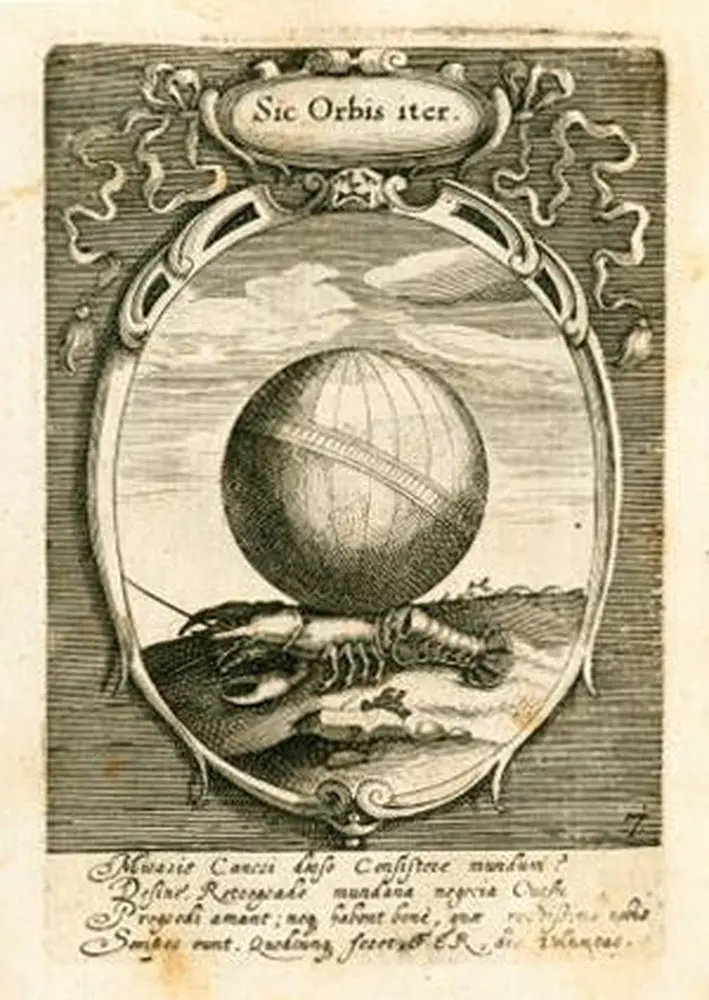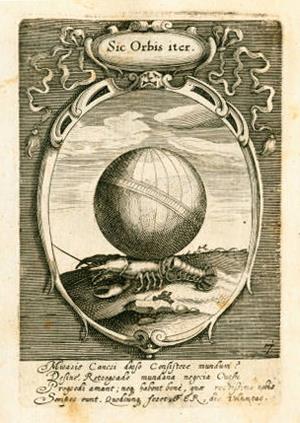

E-books date all of the way back to the 16th century. Only in this case, the “e” is for “emblem.”
Emblem books were every bit the rage that today’s e-books have become. They are a unique combination of pictures and words, and they were popular for over 200 years—from 1531 to about 1750. Electronic books are a blink of an eye in comparison.
But yesterday’s emblem books are fast becoming today’s electronic books, for the University of Illinois recently finished digitizing 365 of the 740 emblem books in its collection, which is one of the largest in the world, says Mara Wade, professor of Germanic languages and literatures and project director.
What’s more, Illinois has teamed up with the Herzog August Bibliothek in Germany, which has a collection of about 800. Together, the two institutions will eventually have the largest virtual collection of emblem books in the world. Digitization will increase access to the books and preserve them, for many are threatened by deterioration.
Emblem books “became a phenomenal European hit,” Wade says, when a Florentine lawyer named Andrea Alciato first collected emblems into a book in 1531—a time when the printing press was revolutionizing communication, much the way the Internet is doing today. Numerous emblem books dealt with religious subjects, but there were also Dutch love emblems and many dealing with politics and nature.
An emblem book typically unites three elements—a motto, a picture, and poetry, Wade explains. The three parts create a puzzle that carries metaphors and messages for readers. For instance, one popular image was an elephant with a castle on its back stepping on and crushing shields, lances, and swords. This elephant symbolized “pax,” or peace, and the accompanying motto and poem would build on this theme.
The Illinois team adopted as their mascot the emblem of a crayfish carrying a globe on its back, with an accompanying motto: “Sic orbis iter,” or “Thus the way of the world.”
“Those who knew their natural history would have known that a crayfish often scuttles backwards,” Wade says. In other words, the emblem tells us that the way of the world is that we often move backwards more than we move forward.
“Thus, readers can see how emblematic literature also builds on adages and proverbs: ‘One step forward, two steps back,’” she adds.
The Illinois team adopted the crayfish emblem as its mascot because of the exacting nature of their digitization project. Nevertheless, the U of I team finished the first part of the project in only a year and has already pressed forward to the second phase.
In this phase, Illinois researchers Tim Cole, Myung-Ja Han, and Tom Kilton, together with graduate students Paul Meyer and Susanne Kress, are making it possible for historians to search all of the emblems contained in their 53 German emblem books by more than just author and title. Historians will be able to search by the themes presented in both mottos and pictures.
Not all of the books in the Illinois collection were digitized because many were either too fragile or their binding was too tight to be placed on scanning beds, Wade says. Each book had to be cataloged, assessed for whether it could be safely scanned, delicately transported across campus, and examined carefully for any damage after scanning.
A single emblem book can contain anywhere from 10 to 1,500 pictures, or emblems. Illinois has scanned over 32,000 individual emblems from its books; and together with their German partners, the project “Emblematica Online” will make accessible approximately 70,000 emblems in the combined digital collection.
But emblems didn’t just show up in books during the Renaissance. These images appeared on bowls, drinking vessels, churches, manor houses, and peasant cupboards, Wade says. For instance, the crayfish emblem appears among a cycle of emblems painted on the walls of the town hall in Nuremburg, Germany, in 1617.
Another emblem in the Nuremburg cycle depicts a crane standing on one leg in the water while clutching a rock in the claw of its other foot. This image symbolizes the prince’s vigilance because if the crane ever fell asleep, it would drop the rock, and the splash would wake up the bird.
According to Wade, Illinois owns some unique emblem books, including a one-of-a-kind manuscript book hand-painted on vellum using watercolors for the images and gold ink for the text.
“This is a manuscript, not a printed book like most emblem books. So it was meant to be a very valuable object, a very personalized manuscript,” she says. “We don’t have the technology to scan and digitize this book, but maybe someday we will. It’s breathtakingly beautiful.”


